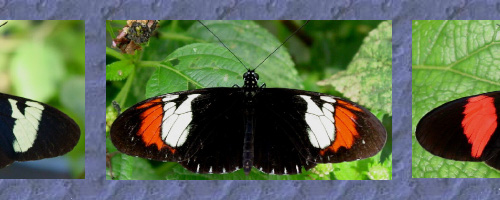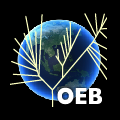Butterfly speciation

The second model working for Sergey Gavrilets concerns a case of homoploid hybrid speciation (that is, speciation through hybridization without any change in the number of chromosomes) in Heliconius butterflies.
The model was born through a collaboration between Gavrilets and Jesús Mavárez from the Smithsonian Tropical Research Institute. The project is an spatial, explicit genetic, ecological speciation model, and the article is part of the Case studies and mathematical models of ecological speciation series by Sergey Gavrilets.
Interestingly enough, the model predicts that hybrid speciation is indeed possible and even likely. However, the long term spatial coexistence of the two parental species with the newly created hybrid species is unlikely. Very stringent conditions would have to exist for this to be the case, or spatial heterogeneities in habitats or learning mechanisms of birds (which predate on these butterflies despite the fact that they are unpalatable) would need to be present.
Other papers of this series concern Cichlids in a crater lake, Palms on an oceanic island (published in Molecular Ecology and developed by Aaron Vose) and Snails in a Swedish coastline (in press also on Molecular Ecology and developed by Suzanne Sadedin.)
The Heliconius article was published in the Evolution journal in 2011. Here is the publication abstract.
About Me
![]() Edgar A. Duéñez Guzmán is a Senior Research Engineer at DeepMind.
Previously he was at Google, where he developed the first
machine learning system to select the index for Image Search.
During his academic career, he was a Postdoctoral fellow at the
Department of Biology at
KU Leuven working with
Tom Wenseleers in social evolution in microbes;
Edgar A. Duéñez Guzmán is a Senior Research Engineer at DeepMind.
Previously he was at Google, where he developed the first
machine learning system to select the index for Image Search.
During his academic career, he was a Postdoctoral fellow at the
Department of Biology at
KU Leuven working with
Tom Wenseleers in social evolution in microbes;
and a Research Associate at the
Department of Organismic and Evolutionary Biology at
Harvard University working with
David Haig in social evolution and imprinting.
Learn more...
Contact Info
E-mail: eaduenez {at} gmail {dot} com
 KU Leuven
KU Leuven OEB - Harvard
OEB - Harvard EECS - UTK
EECS - UTK FIT - Monash
FIT - Monash NIH
NIH HHMI
HHMI CIMAT
CIMAT


